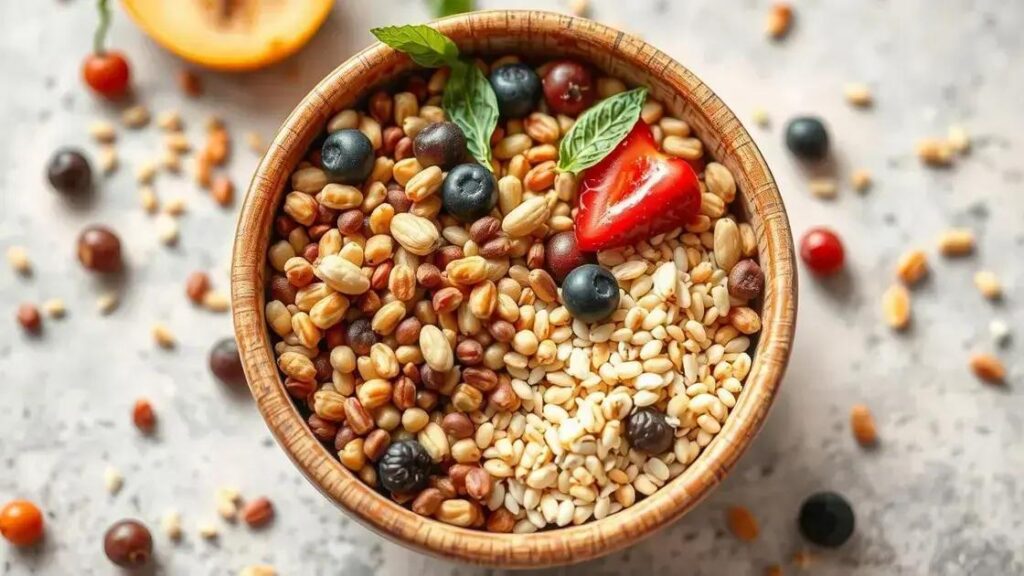Whole grains play a vital role in stabilizing blood sugar levels due to their high fiber content and low glycemic index, making them a smart choice for maintaining health. Incorporating whole grains like quinoa, brown rice, and oats into your diet can improve digestion, promote heart health, and reduce the risk of type 2 diabetes. Simple tips and delicious recipes can help you easily integrate these nutritious grains into everyday meals.
Whole grains play a crucial role in stabilizing blood sugar levels, making them an essential part of a balanced diet. By including whole grains like oats, brown rice, and quinoa, you can promote better health and maintain steady energy throughout the day. In this article, we will dive into understanding whole grains, their benefits, how they impact blood sugar levels, and provide some tasty recipes to help you easily incorporate them into your meals.
Understanding Whole Grains and Their Benefits
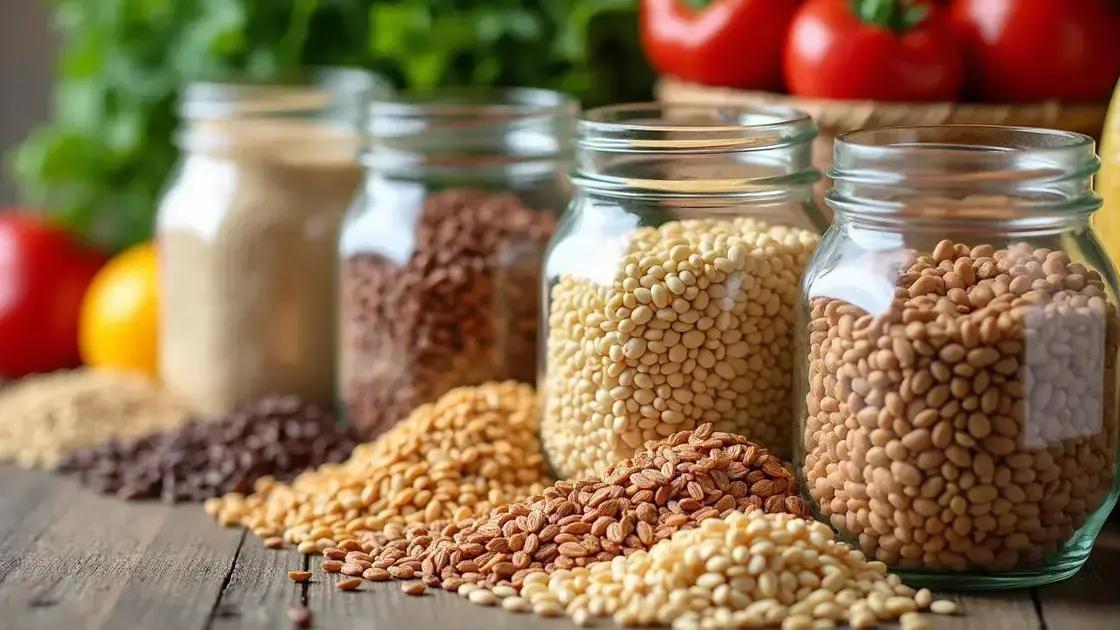
Whole grains refer to grains that contain all three parts of the grain kernel: the bran, germ, and endosperm. Unlike refined grains, which remove the bran and germ, whole grains retain their nutrients and fiber. This makes them a more nutritious choice for a well-rounded diet.
Benefits of Whole Grains
Incorporating whole grains into your diet offers several benefits. They are an excellent source of dietary fiber, which helps with digestion, keeps you feeling full longer, and can aid in maintaining a healthy weight. Additionally, whole grains contain important nutrients such as vitamins B and E, iron, magnesium, and antioxidants.
Heart Health
Whole grains can play a role in promoting heart health. Studies show that people who consume whole grains regularly have a lower risk of heart disease. Their high fiber content helps lower cholesterol levels and improve blood pressure.
Blood Sugar Regulation
Whole grains can help stabilize blood sugar levels due to their low glycemic index. Foods that have a low glycemic index cause a slower rise in blood sugar, which is crucial for those managing diabetes or looking to maintain consistent energy levels throughout the day.
Choosing the Right Whole Grains
When selecting whole grains, look for products that list “whole grain” as the first ingredient. Popular options include brown rice, quinoa, barley, whole wheat bread, and oats. Avoid overly processed grain products, as they may not provide the same benefits.
How Whole Grains Impact Blood Sugar Levels
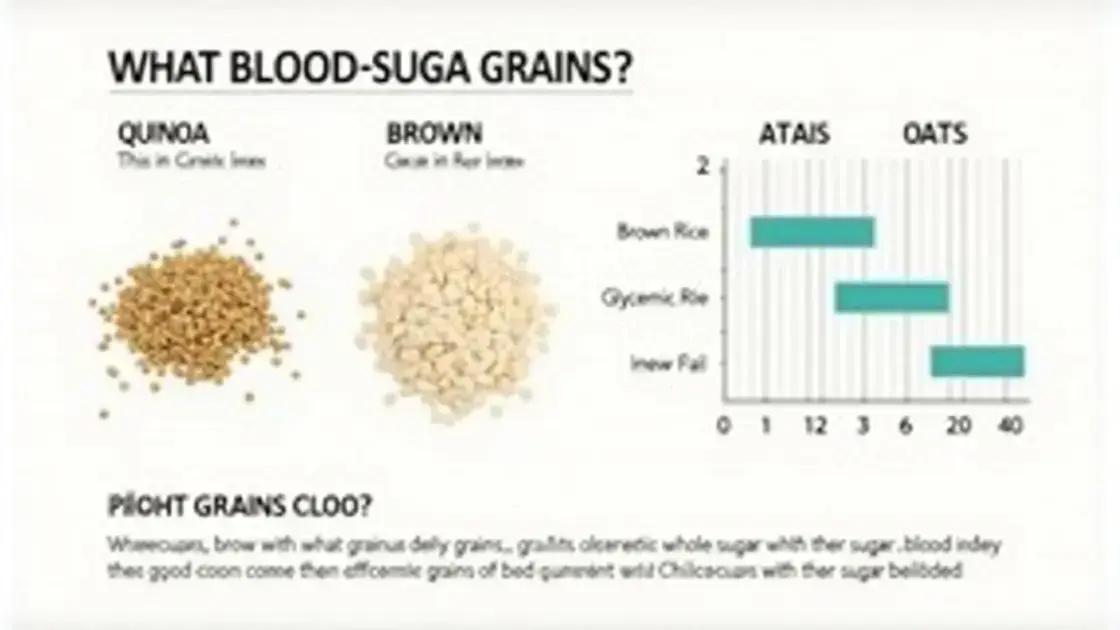
Whole grains have a significant impact on blood sugar levels, making them a vital food choice for those looking to manage their glucose. When consumed, whole grains digest more slowly than refined grains due to their higher fiber content. This slower digestion helps prevent spikes in blood sugar.
The Glycemic Index
Foods are measured by their glycemic index (GI), which indicates how quickly they raise blood sugar levels. Whole grains typically have a lower GI compared to refined grains. For example, brown rice has a lower GI than white rice, making it a better choice for blood sugar control.
Fiber’s Role in Blood Sugar Control
Fiber acts as a stabilizer for blood sugar levels. It slows the absorption of sugar into the bloodstream, preventing rapid spikes. Diets high in fiber can improve insulin sensitivity, allowing the body to manage blood sugar more effectively. Whole grains are an excellent source of dietary fiber.
Balanced Meal Incorporation
Combining whole grains with proteins and healthy fats can further help regulate blood sugar levels. This combination slows digestion and reduces the overall glycemic load of a meal, promoting steady energy. For instance, pairing quinoa with grilled chicken and vegetables enhances both the nutritional value and blood sugar stability of your meal.
Research Findings
Several studies have shown that individuals who consume whole grains regularly experience better blood sugar control. In fact, diets rich in whole grains are linked to a lower risk of developing type 2 diabetes. Keeping a varied whole grain intake, such as oats, barley, and whole wheat, can contribute to overall metabolic health.
Tips for Incorporating Whole Grains into Your Diet
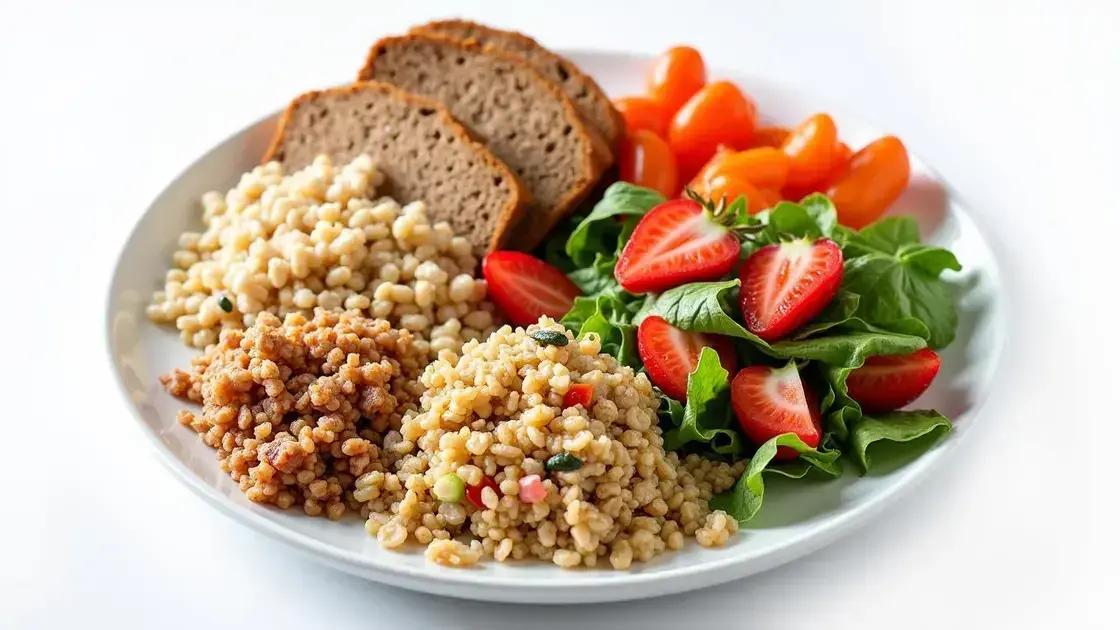
Incorporating whole grains into your diet can be simple and delicious. Here are some practical tips to help you get started.
Start Your Day with Whole Grains
Begin your morning with whole grain cereals or oatmeal. These options provide fiber and help stabilize blood sugar throughout the day. Look for cereals that list whole grains as the first ingredient.
Switch to Whole Grain Bread and Pasta
When making sandwiches or pasta dishes, choose whole grain bread and whole grain pasta. These options not only add nutrients but also enhance flavor and texture. You may not even notice the difference!
Add Whole Grains to Soups and Salads
Boost your soups and salads by adding grains like quinoa or farro. They can make your meals more filling and nutritious, while also adding a refreshing taste.
Snack Wisely with Whole Grains
Select whole grain snacks, such as popcorn or crackers. These provide fiber and keep you satisfied between meals, helping to maintain steady blood sugar levels.
Experiment with New Whole Grains
Don’t hesitate to try new grains. Explore options like bulgur, spelt, or barley. Each has a unique flavor and texture, perfect for diversifying your meals.
Healthy Whole Grain Recipes for Blood Sugar Control
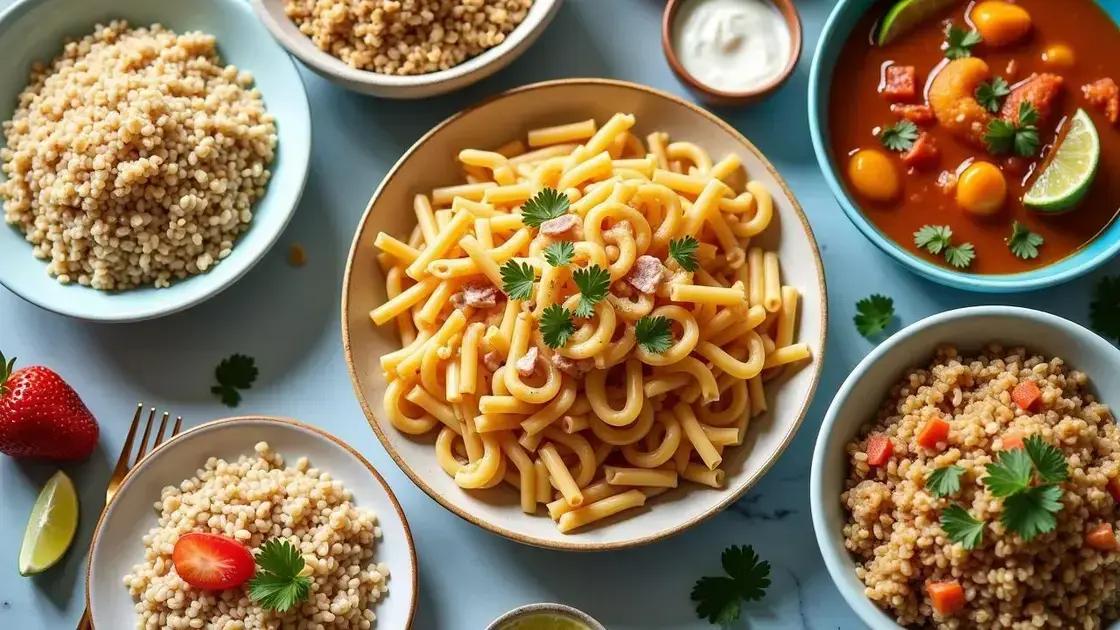
Here are some tasty and healthy recipes featuring whole grains that can help control blood sugar levels.
Quinoa and Black Bean Salad
This refreshing salad combines cooked quinoa with black beans, corn, diced peppers, and a lime-cilantro dressing. Rich in protein and fiber, this dish provides lasting energy and helps stabilize blood sugar.
Oatmeal with Nuts and Berries
Prepare your morning oats using whole grain oats and top it with a mix of nuts and fresh berries. Nuts provide healthy fats, while berries add antioxidants. This meal keeps you full and balanced.
Whole Wheat Pasta with Vegetables
Cook whole wheat pasta and toss it with sautéed vegetables like broccoli, spinach, and bell peppers. Drizzle with olive oil and sprinkle with parmesan cheese for a delicious and nutritious meal.
Barley Soup with Vegetables
Make a hearty soup by adding barley to a pot of vegetable broth with carrots, celery, and onion. Allow it to simmer until the barley is tender. This dish is high in fiber and great for blood sugar control.
Brown Rice Stir-Fry
Stir-fry cooked brown rice with tofu or chicken and a variety of colorful vegetables like bell peppers and snap peas. Use low-sodium soy sauce for the flavor. This dish is protein-rich and satisfying.
The Importance of Whole Grains in Your Diet
Incorporating whole grains into your diet can significantly impact your health, especially regarding blood sugar control. Whole grains provide essential nutrients, fiber, and antioxidants, making them a smart choice for maintaining stable blood sugar levels.
By understanding the benefits of whole grains and how they affect blood sugar, along with practical tips for inclusion in your meals, you can create a diet that promotes better health and energy stability.
With delicious recipes and easy ways to incorporate whole grains into everyday meals, you can enjoy a varied and healthy diet that supports blood sugar management. Making informed choices about the grains you consume will pave the way for a healthier future.
Embrace whole grains as part of your lifestyle, and optimize your diet for improved wellbeing!
FAQ – Frequently Asked Questions About Whole Grains and Blood Sugar Control
What are whole grains?
Whole grains are grains that contain all parts of the grain kernel, including the bran, germ, and endosperm, making them more nutritious than refined grains.
How do whole grains help with blood sugar control?
Whole grains have a low glycemic index and high fiber content, which helps slow down sugar absorption and maintain steady blood sugar levels.
Can you give examples of whole grains?
Examples of whole grains include brown rice, quinoa, oats, barley, and whole wheat products.
What are the benefits of adding whole grains to my diet?
Adding whole grains can provide health benefits like improved digestion, reduced risk of heart disease, better blood sugar control, and increased nutrient intake.
How can I incorporate whole grains into my meals?
You can start your day with whole grain cereals, switch to whole grain bread and pasta, and add whole grains to soups, salads, and snacks.
Are there any tasty recipes for whole grains?
Yes! Recipes like quinoa salad, oatmeal with nuts and berries, and brown rice stir-fry are delicious ways to enjoy whole grains.

